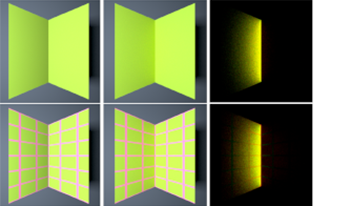
Fluorescence is an optical phenomenon, specific to certain materials that absorb light with higher energy and re-emit it at lower energy, with unnoticeable time latency. Due to this so-called Stokes shift, fluorescent materials pose several challenges in image capture, where usually a filtering setup is required at the illumination and/or sensing ends. Nevertheless, fluorescence emission is diffuse, which was previously used in shape from photometry models. In this work, we target the shape from fluorescence method for a specific category of materials: those with overlapping reflectance and fluorescence signals. In particular, we investigate how the self-interreflections (light bounces off a surface that get re-reflected by the surface itself) change the appearance of scenes with such fluorescent materials and how this affects the shape estimation with a photometric stereo model. To avoid instrumental artifacts inherent in real image capture setups, we perform our analysis on a synthetic dataset of multi-light images, generated with a physically-based spectral renderer that supports fluorescence.